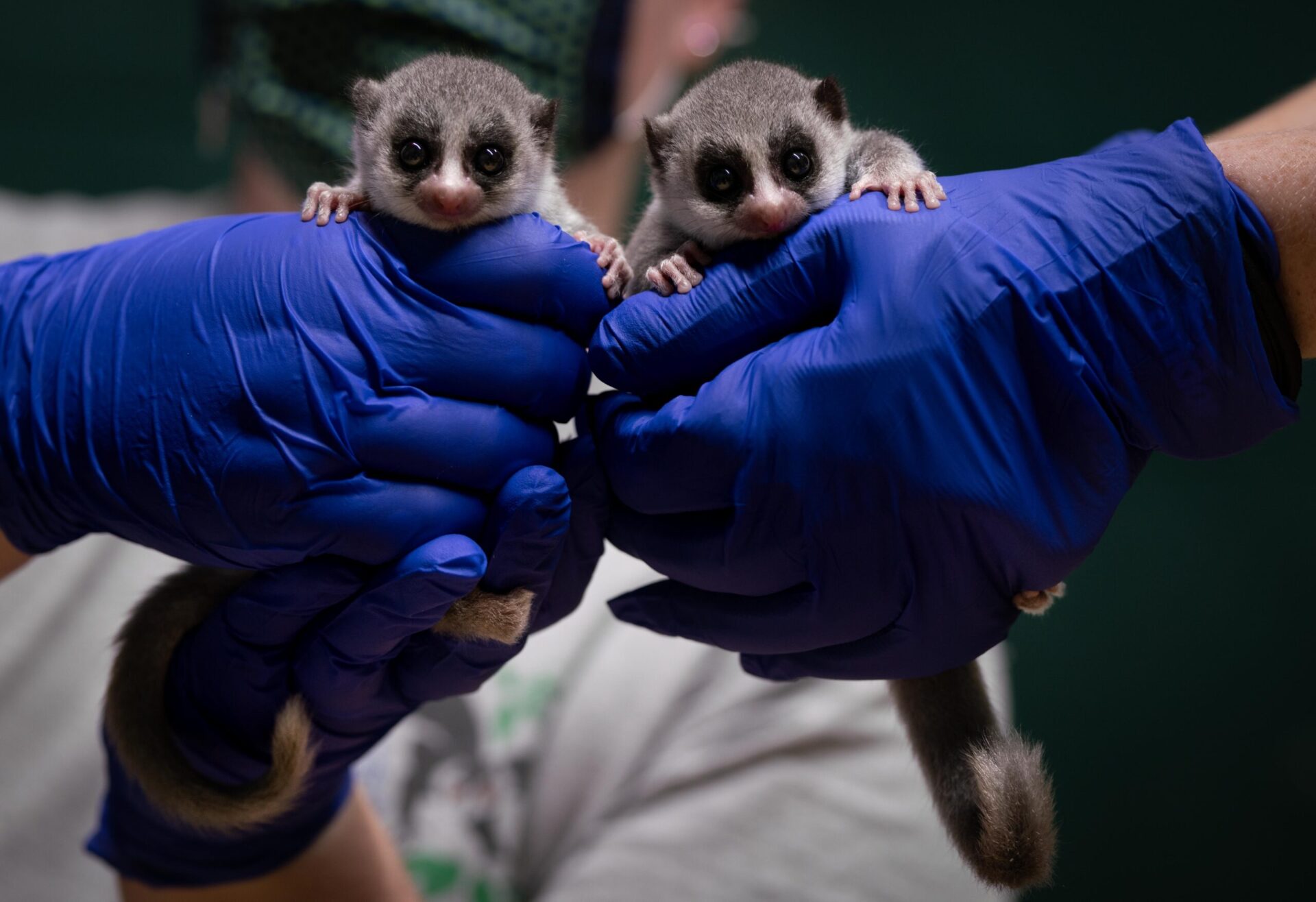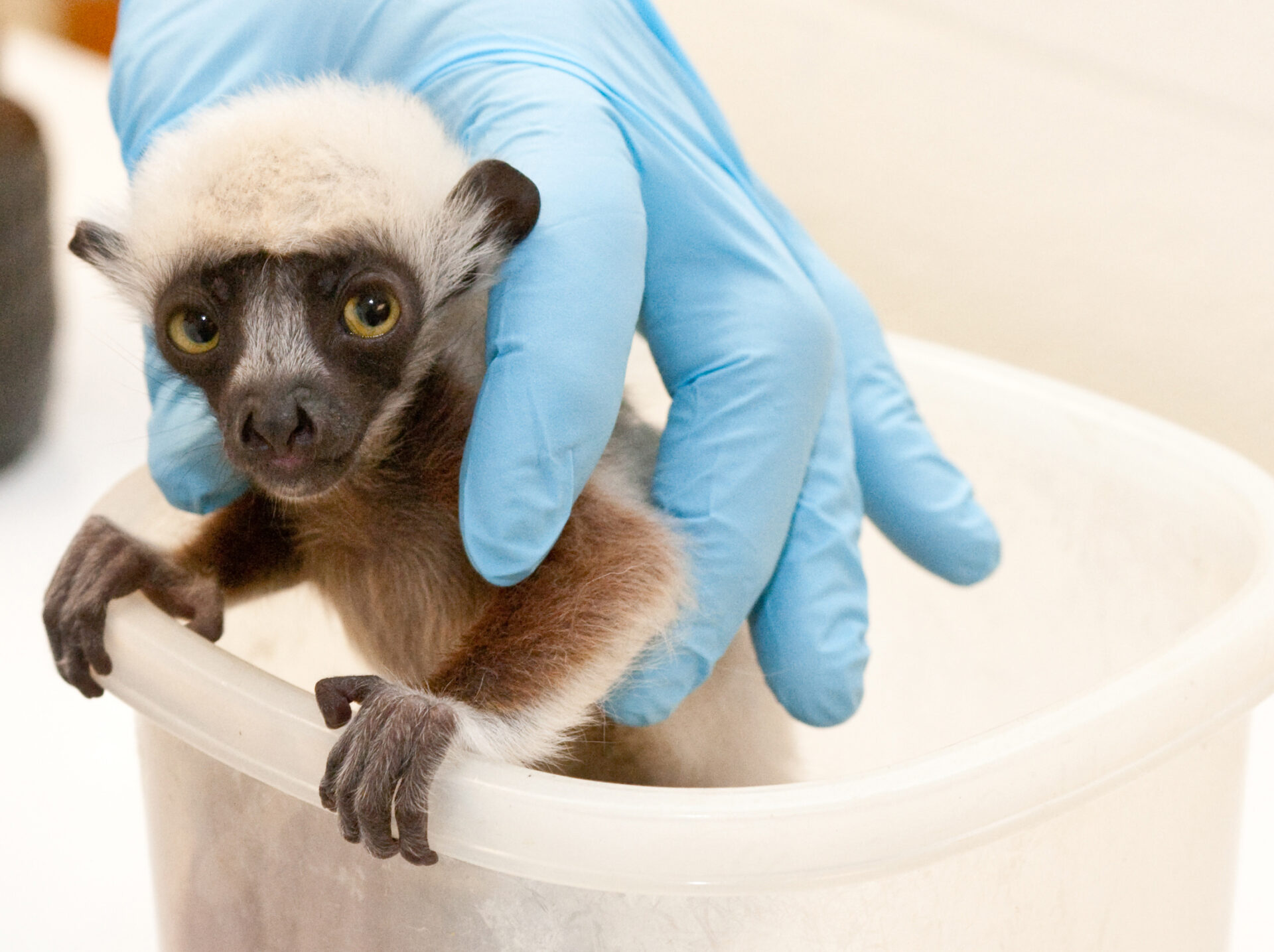Registrar and Data Management: 2020 Impact Report
Despite a few challenges due to the pandemic, the Registrar and Data Management Department continued to support the many data and analytical infrastructure needs of the Duke Lemur Center. Below are a few detailed examples of work done by this department in 2020.
A New Venture to Analyze Our Data

The DLC’s treasure trove of data, which contains information about the lives, health, and habits of thousands of animals, dates from the center’s beginnings in 1966. The large sample sizes, exact dates of events, and longitudinal data that in many cases span an animal’s entire life make these data sets unique, particularly within the primate literature. Because lemurs hang near the edge of extinction, it’s extremely unlikely that a collection of similar size will ever be recreated.
With nearly 55 years of animal records and data, the DLC continues to explore new and innovative ways to capture, maintain, and analyze this critical information about our colony’s members. For instance, even though the DLC stores its animal records in an American Zoo Association (AZA) approved global database, its ability to help us to report and analyze our own data is limited. Therefore, there are times when an internal database is needed.
In 2020, the DLC built a brand new data capture system in order to benefit our animal training program. We started with the DLC’s training records which had been manually entered into spreadsheets for many years, yet had not been analyzed in a way to support the training program further. While the concept of the training database took shape in fall 2019, much of the work happened in the beginning of 2020, before any of the DLC team knew a global pandemic was about to change so many lives. In total, the project build took a little over six months to complete. The result is a fully functioning database that can be securely accessed from home, on any device. The capability for many staff to use it while working from home became very useful when the COVID-19 stay-at-home orders began in mid-March 2020.
This new database for training information was built using a program called REDCap: Research Electronic Data Capture. REDCap is a no cost, web-based application developed by Vanderbilt University to create databases for capturing data for any type of research or project. The resulting database makes capturing training session details easier for staff, while also having the ability to build reports, charts and graphs so staff can examine the animal’s training outcomes. For example, capturing the start and end time of a training session helps to quantify the number of staff hours dedicated to train each animal in order to reach its training goal. It is amazing to see the time the animal care team invests in building that relationship of trust and care with each individual lemur. It leads to animals with lower stress and better well-being overall.
In-house Animal Care Reports

Staff at the Duke Lemur Center observe and record virtually every aspect of an animal’s life from birth to death. They know when each animal was born, who her parents were, how fast she grew, what she ate, which animals she mated with, how many offspring she had, and when and why she died.
Managing a colony of over 200 lemurs is not an easy task. To support the animal care staff in keeping track of every colony member, the department creates various in-house reports every month. Using current and historical colony data, these reports organize important information such as weight, pregnancies, location, and parentage for each lemur. A particularly fun report is generating the birthday calendar! Each month, the department provides the husbandry staff with a list of every animal celebrating another year of life. Staff often celebrate the birthday by creating special treats and surprises for the lemur.
Specified Data Requests

Rupert, an infant Coquerel’s sifaka, during a routine weighing. One of the ways the DLC monitors the health of an infant is the infant’s weight. Young Rupert was weighed regularly and his growth curve was compared to other sifaka infants born at the DLC, which helped our veterinarians ascertain whether he was growing at a healthy rate. The center’s database contains 82,609 weight measurements for more than 2,200 animals, taken over each animal’s lifespan.
This year the DLC welcomed 19 newborns. One of the most rewarding tasks is providing the husbandry staff with weight graphs. While it may not sound all that exciting, species-specific growth charts help to ensure that DLC infants thrive. These graphs use DLC historical weight data to help husbandry and veterinary staff know what outcomes to expect when monitoring infant growth milestones. If staff observe an adverse change in infant development, these various graphs can help document the observational knowledge many of the DLC staff have from years of experience caring for lemurs.

